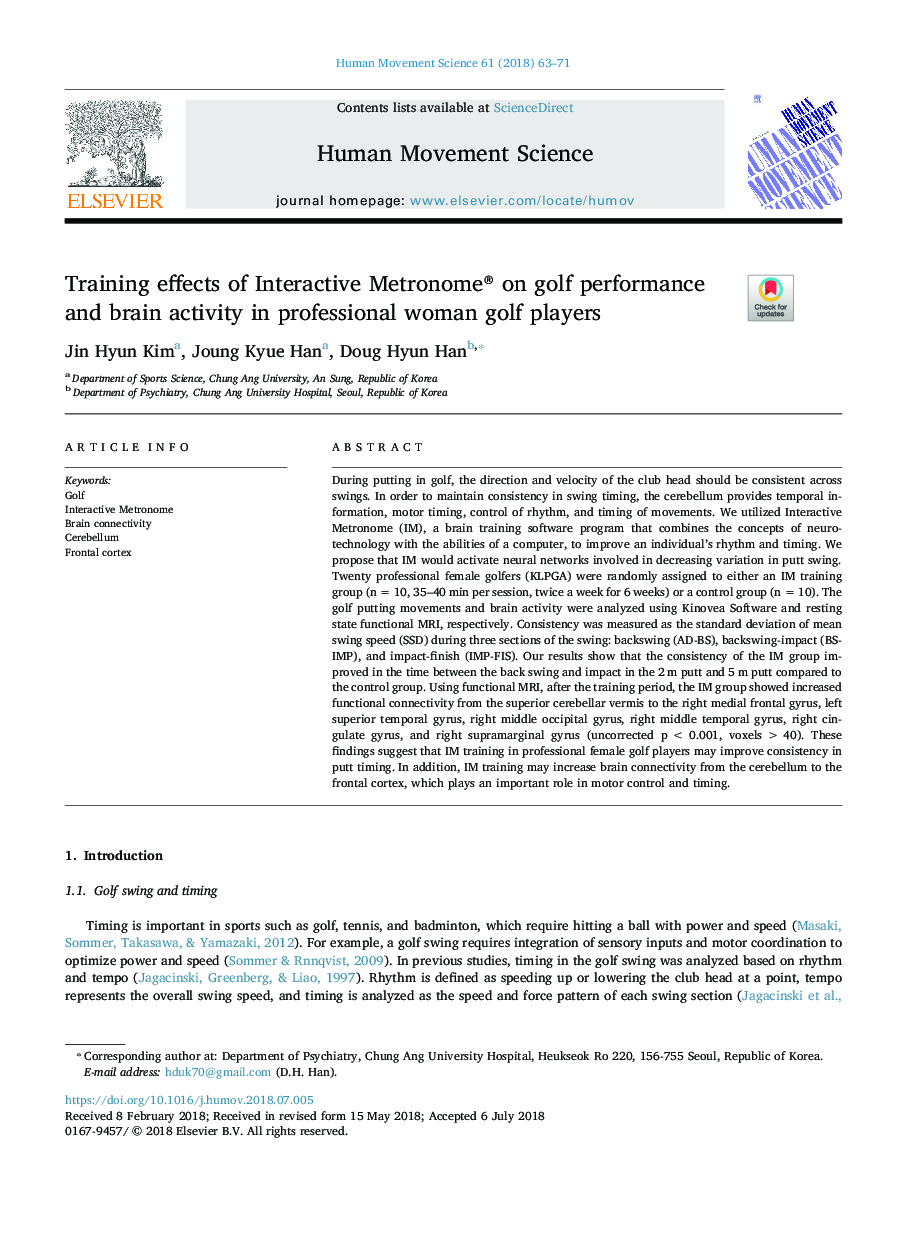| Article ID | Journal | Published Year | Pages | File Type |
|---|---|---|---|---|
| 7290610 | Human Movement Science | 2018 | 9 Pages |
Abstract
During putting in golf, the direction and velocity of the club head should be consistent across swings. In order to maintain consistency in swing timing, the cerebellum provides temporal information, motor timing, control of rhythm, and timing of movements. We utilized Interactive Metronome (IM), a brain training software program that combines the concepts of neurotechnology with the abilities of a computer, to improve an individual's rhythm and timing. We propose that IM would activate neural networks involved in decreasing variation in putt swing. Twenty professional female golfers (KLPGA) were randomly assigned to either an IM training group (nâ¯=â¯10, 35-40â¯min per session, twice a week for 6â¯weeks) or a control group (nâ¯=â¯10). The golf putting movements and brain activity were analyzed using Kinovea Software and resting state functional MRI, respectively. Consistency was measured as the standard deviation of mean swing speed (SSD) during three sections of the swing: backswing (AD-BS), backswing-impact (BS-IMP), and impact-finish (IMP-FIS). Our results show that the consistency of the IM group improved in the time between the back swing and impact in the 2â¯m putt and 5â¯m putt compared to the control group. Using functional MRI, after the training period, the IM group showed increased functional connectivity from the superior cerebellar vermis to the right medial frontal gyrus, left superior temporal gyrus, right middle occipital gyrus, right middle temporal gyrus, right cingulate gyrus, and right supramarginal gyrus (uncorrected pâ¯<â¯0.001, voxelsâ¯>â¯40). These findings suggest that IM training in professional female golf players may improve consistency in putt timing. In addition, IM training may increase brain connectivity from the cerebellum to the frontal cortex, which plays an important role in motor control and timing.
Related Topics
Life Sciences
Neuroscience
Cognitive Neuroscience
Authors
Jin Hyun Kim, Joung Kyue Han, Doug Hyun Han,
